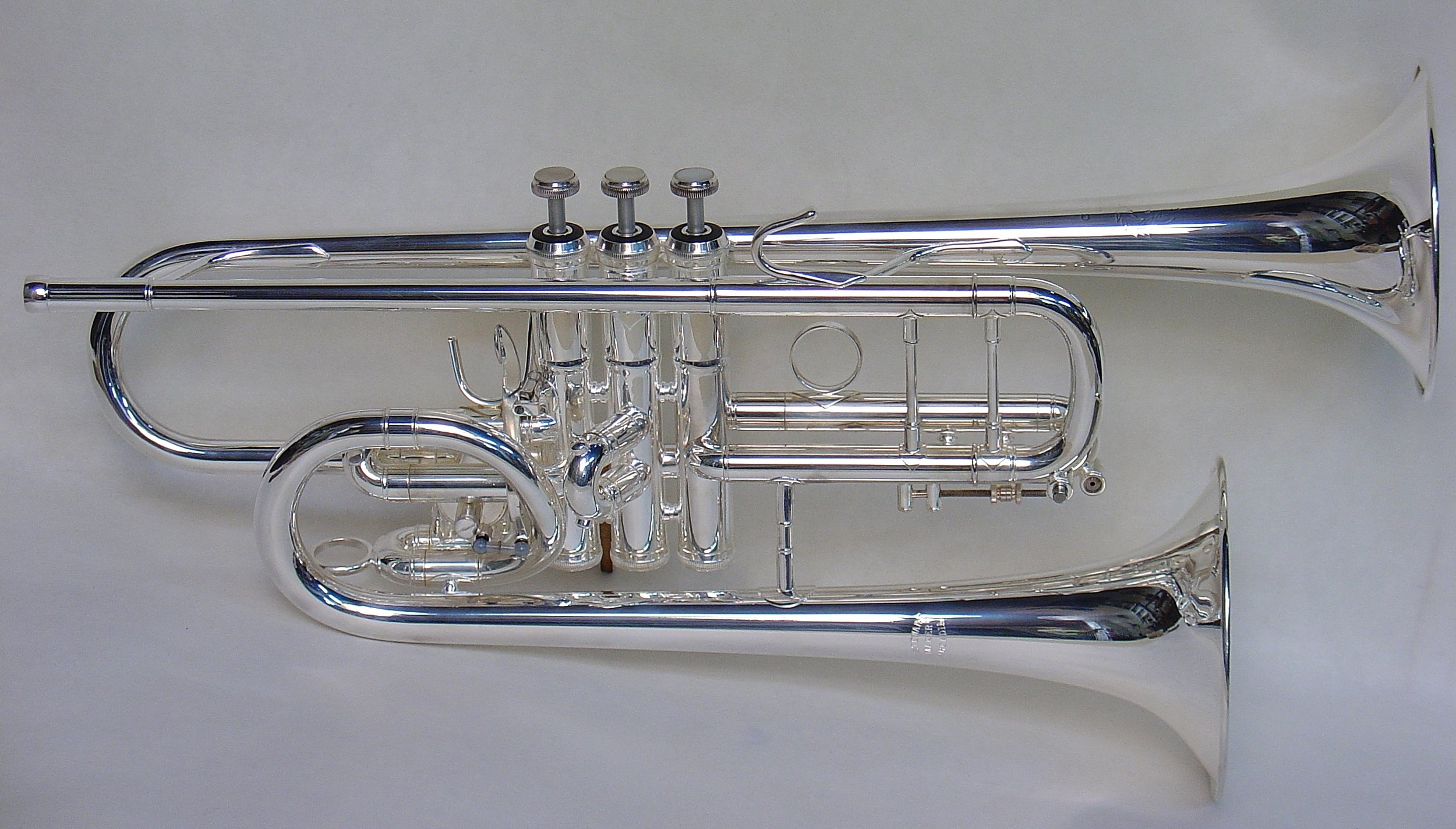Double Bell Trumpets
First, I apologise for the low quality of the first two photographs. They are from earlier in my career when I struggled to get decent photographs with an old 35mm camera, bad lighting etc. The concept in these trumpets is the same as in Echo cornets and similar duplex instruments but having two similarly size bells allows for flexibility in mute choices. In all three cases, the rotary change valve is controlled by the left thumb.
The first I built in 1982 out of all new Olds parts; Ambassador/Special valve section, single French horn valve, Studio tuning slide and Custom bells. I believe that I made the mouthpipe myself. I was experimenting with such things at that time. I made the change valve lever and linkage as well as a very short tuning slide (below the first valve slide) that was just long enough for tuning the second bell with various mutes. It was quite a decent player and was fun to put different mutes in the bells. I eventually sold this trumpet to Franz Streitwieser of Trumpet Museum fame.
First double bell trumpet, 1982.
The second photo is of a trumpet that I modified about ten years later for the late Patrick Delile, who was an avid collector in Paris. He sent me a standard Conn Vocabell 48B and a spare bell from a 40B Vocabell. It was important to Patrick that the bell rims be in the same plane. I explained to him that getting exact length measurement of curved tubing and precisely bending the bell (which had to curve around the original bell stem to be positioned on the right side) without trial and error is difficult and it may be a little off. He was OK with that and it turned out almost exactly right. The rotary change valve is very similar to the Olds other than the angle which allows the auxiliary bell to hang below.
Double Vocabell trumpet, 1992.
Projects like these are a lot of fun, but the cost of labor makes for a very expensive novelty. It is certainly no surprise, because of the expense involved in this sort of custom work, that more than a decade passes between each order. These projects have all been an enjoyable bit of engineering challenge, not the basic work of adding the valve and bell, but to make it as comfortable and enjoyable to use as possible.
This last example is definitely the best of the three. Not only is the thumb lever for changing bells right under the left thumb with a normal grip, but the over all balance of the trumpet makes the extra weight easy to hold in playing position even with a mute in one or both bells. It is also possible to work the change valve with the right thumb, leaving the left hand to work a plunger or "wa-wa" a Harmon or similar mute. I must admit that this latter maneuver is not as ergonomic as the former.
Click on image below for larger view.
A weakness in both of the earlier double bell trumpets is the tuning slide for the second bell extends out at an angle that is both unsightly and easily damaged. For this trumpet, I put a short curve between the valve and tuning slide, directing that slide parallel to the bell and other slide tubing. This is much more compact and pleasing to the eye. I put the rotary valve stop arm on the opposite side from the linkage arm to allow for more room for the cork plate. In retrospect, I could have put them on the same side and saved myself that extra work but it works very well this way. I'm very happy with this design and would be happy to put together similar instruments for customers in the future.




